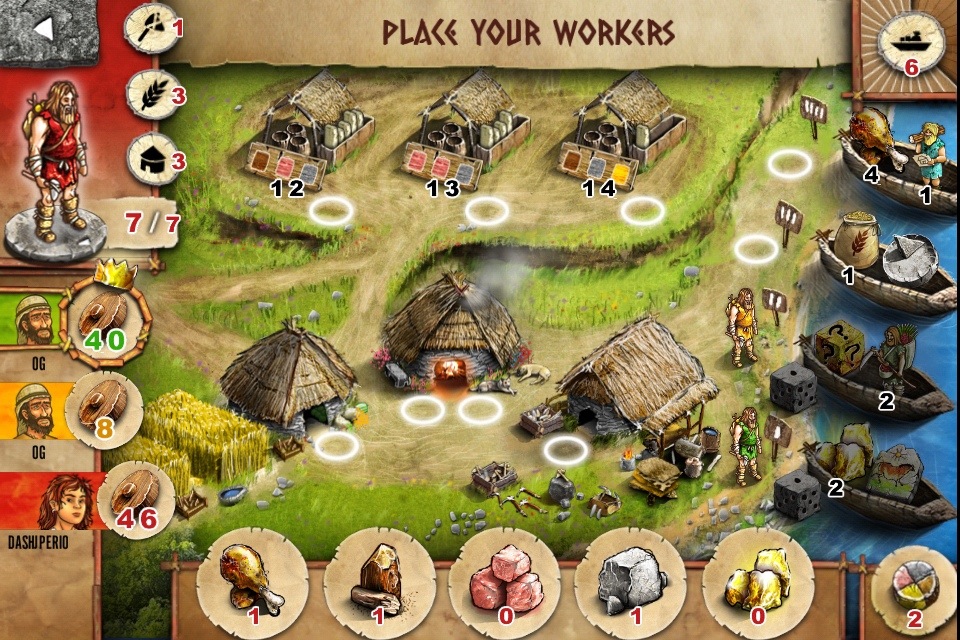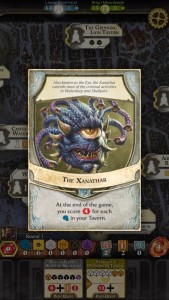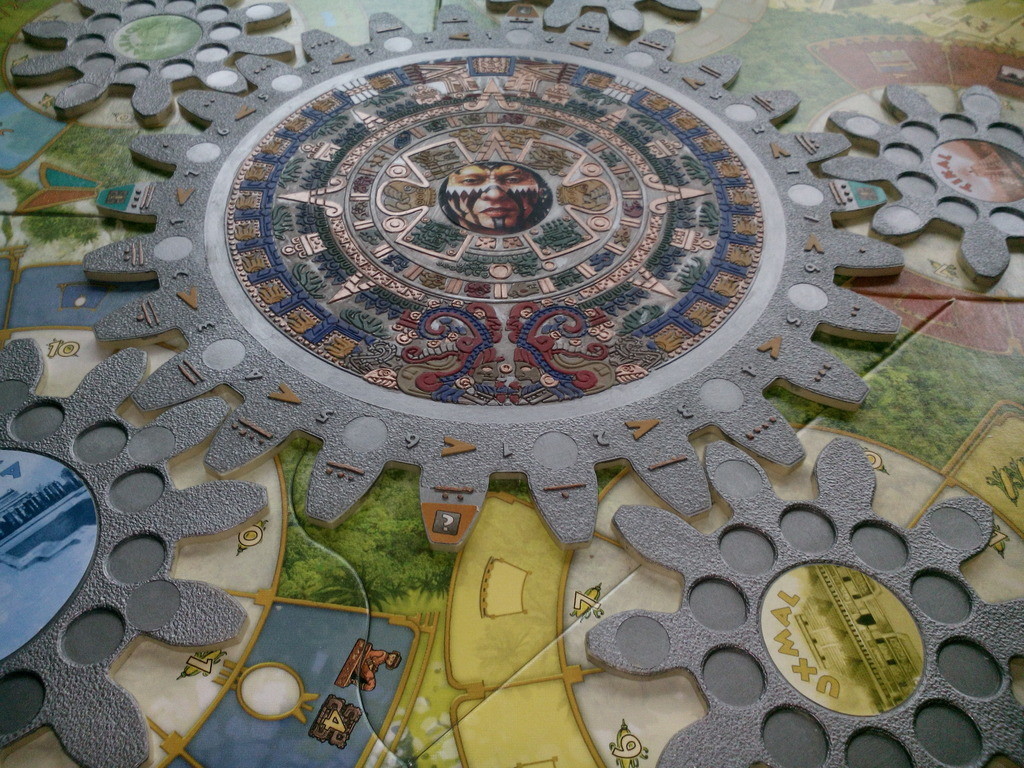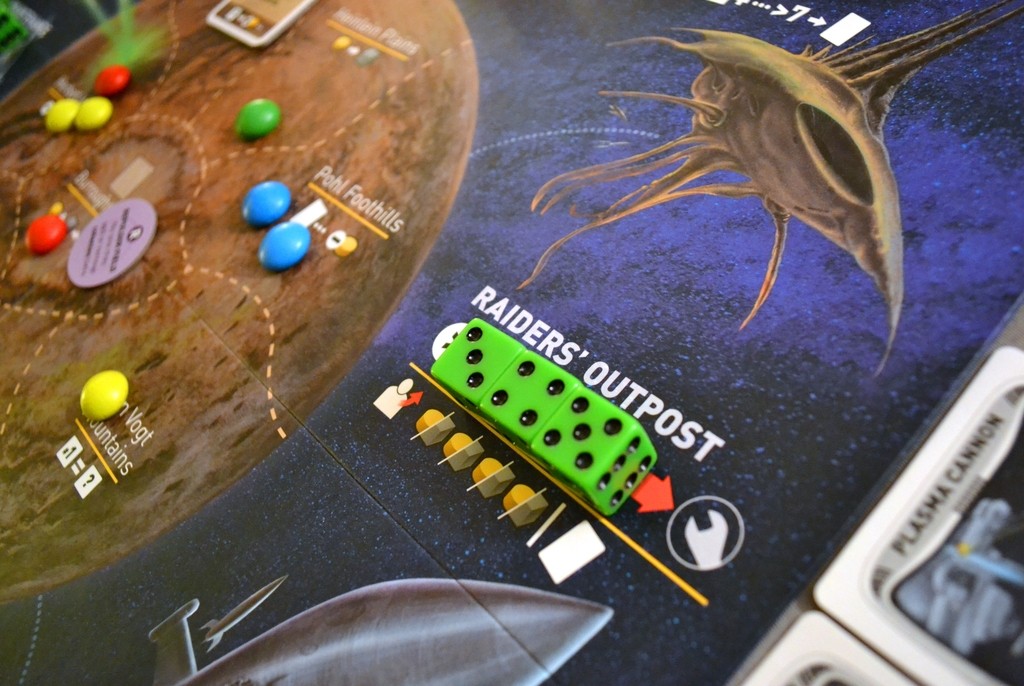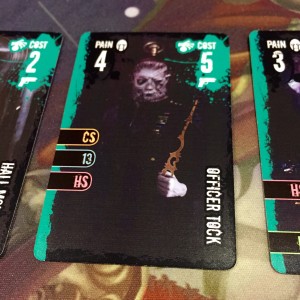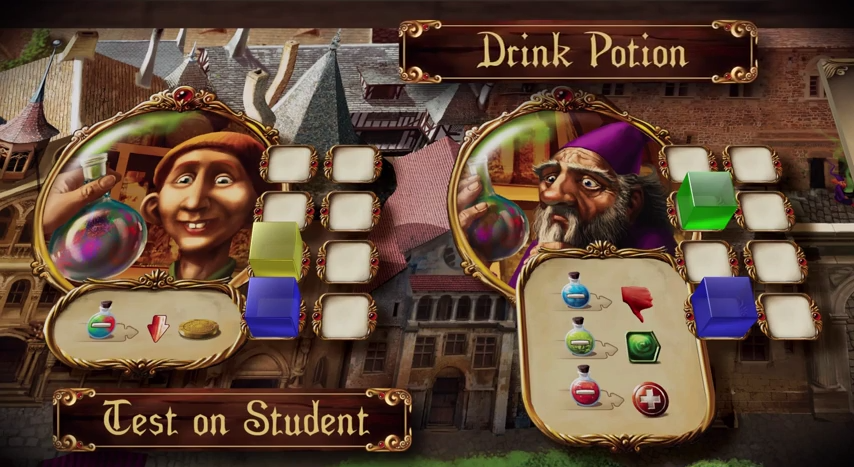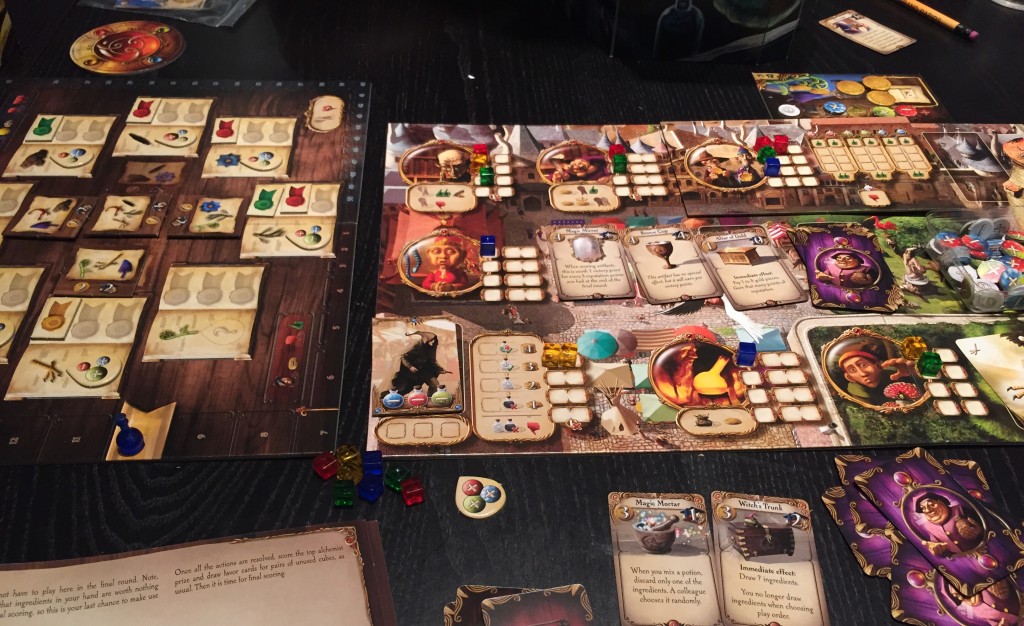When I’m looking for some serious tabletop enjoyment, I want to work.
Well, I don’t want to work — I want to strategically place little wooden meeples on a board, and gain the benefits from that strategic placement. In short, when I want some deeply-satisfying board game action, I often look to worker placement games.
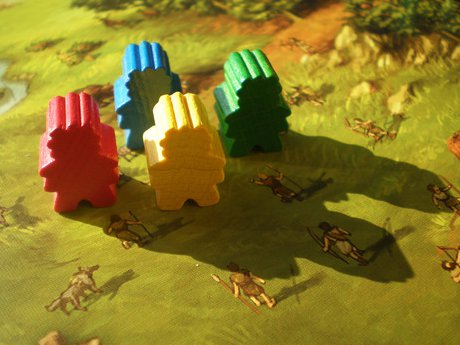
“We’re here to kick ass and… allow you to roll a die and claim an amount of food relative to the result of said roll. Yeah.”
“Worker placement” refers to a mechanic that allows players to choose from a limited selection of actions available to all players. This is why the BGG.com description of this mechanic also calls it “action drafting,” which sounds rather exciting. Players select (or “draft”) these actions by placing their token on a space that corresponds with the action, both claiming it and also (potentially) preventing others from taking that action.
The worker placement name comes from the themes behind a lot of the popular and early(-ish) games that used it. Often, your token represented a worker, and placing it was how you claimed your action. When you reclaimed your token (worker), you took the action or received the item listed on that space. It’s a simple concept, but it makes for a lot of opportunities for strategy, as we’ll see in the highlighted games.
Intro to Worker Placement
The first two games we look at are great introductions to the worker placement mechanic. They’re balanced, relatively simple, and run on the act of using little meeples to claim action spaces. They’re also a lot of fun, and have been featured on Geek & Sundry’s TableTop show, both of which make them even easier to introduce to new players.
Welcome to the Stone Age!
Stone Age was my introduction to worker placement games, and it still remains a favorite. It’s deep enough to have a high replay value, but simple enough to open the doors to new converts to the Church of Worker Placement. There’s also a faithful digital adaptation that is perfect for kicking your brain into gear during the morning train ride.
Each player in this game directs a clan of stone age people as they try to out-do the other clans. You achieve this by building extravagant huts, collecting sets of ancient advancements, and bringing in specialists like shamans and builders into your clan.
To do succeed in these endeavors, however, you needs resources, food, and people. These are gathered by… well, by placing workers. Each player takes turns placing their people on squares that represent resource-gathering, trading, building, or upgrading. Then each player takes a turn reclaiming their workers, bringing with them the fruits of their labor. When there are no more huts to build or traders to trade, the game ends and the victor is crowned. Probably with a rock.
Seven years after it was published, Stone Age is still a great example of how fun and welcoming a worker placement game can be. It even earned a coveted spot on season three of TableTop. I’ll place it here to watch at your leisure:
Stone Age wasn’t the first worker placement game to get the TableTop spotlight. One season earlier, fantasy author Patrick Rothfuss joined the Geek & Sundry crew for another ridiculously fun gateway game, Lords of Waterdeep
In the Shadows of Waterdeep
On the surface, Lords of Waterdeep is a worker placement game with an official Dungeons & Dragons theme. That’s nothing to sneeze at — it means that the game gets a lot of gorgeous artwork and a canon that transforms generic action spaces into locations that have a backstory. Even better, below the glossy surface is a game of delightful balance and addictive replay-ability.
Victory points in Lords of Waterdeep are primarily earned by completing quests. Who doesn’t love completing quests? You do, that’s who. You play a Lord or Lady of Waterdeep (naturally), whose identity is hidden from other players. Each Lord has a special ability that will net them extra points at the end of the game.
In addition to your Lord’s bonus, the quests you complete often give you an additional benefit beyond mere points. There are also intrigue cards give you a minor boon without costing an action, and buildings that open up more action spaces. Combined, these elements will give a player a rough direction of how they might proceed, meaning that novice players are less likely to be overwhelmed by a buffet of options.
The other thing that makes Lords of Waterdeep a solid introduction to worker placement games it the aforementioned appearance on TableTop. Doesn’t it just look like a good time?
Of all the games on this list, Lords of Waterdeep is the one I play the most, as nearly anyone can jump in and enjoy it. The expansion modules add extra strategy without watering down the core game, and the variety of cards and buildings means your tactics adapt each time you play. And with the faithful digital adaptation available on iOS and Android, you can replay it over and over in practice for your next in-person game.
Intermediate Placement: Mixing It Up
The next few games take the standard worker placement mechanic and put a twist on it. Workers take the shape of dice or cards, or have to contend with the slow turning of the days. Also one of them has a board made up of interlocking gears, and manages to keep them from being just a gimmick.
Tzolk’in: Gods & Gears
We’ve got the concept of the worker placement mechanic, right? Place them down on the board, pick them up to get and/or do stuff. Tzolk’in messes with that standard procedure by making you choose between the two: you can either place any or all of your workers, OR you can pick them up to get stuff. You can’t do both.
Oh, and one other thing: the spaces that you place your workers on move after each turn. The longer you wait to pick up a worker, the better stuff you get. But the longer you wait, the less you can do. It’s a tense game where you have to figure time (represented by the moving board) into your plans.
Like Stone Age, players gather resources for buildings and technologies, and they need to keep their workers fed. But the buildings and technologies do more than just get you victory points in Tzolk’in. They have effects that can help you, like providing extra food from harvest or getting you in good with one of the gods.
 That’s another difference — Tzolk’in adds temples to three deities, and tracks your favor among them. Being high in a god’s favor gets you benefits both tangible (resources) and abstract (victory points).
That’s another difference — Tzolk’in adds temples to three deities, and tracks your favor among them. Being high in a god’s favor gets you benefits both tangible (resources) and abstract (victory points).
The added complexity gives Tzolk’in a steeper learning curve than the previously-mentioned games, but also makes it a riveting play for those who love strategy (or chaos). Plus it has crystal skulls and a dynamic game board that ticks along like a stone clock each turn, which makes a nice distraction when the gods curse you.
I’m Not a Number, I’m a… No, Wait, I’m a Number
All of the games so far have kept the idea that all workers are equal. You place one worker on one spot, and you get the the reward or action that goes along with that spot. But games like Alien Frontiers change that equation. In it, your workers (spaceships) are represented by dice instead of meeples. You roll them to start each turn, and your options are dependent upon the values and combinations you roll. Workers are no longer equal, and the differing values mean that dice manipulation becomes a new tactic added to the players’ arsenal.
Alien Frontiers also changes the purpose of the worker placement mechanic. Rather than trying to build things or gain victory points, your resources and workers are used to gain alien tech and build colonies on a new planet. Victory comes primarily from controlling areas on the planet, rather than accumulating a growing number of abstract points. Worker placement becomes a way to fuel your acquisition and control strategies.
But workers don’t have to be dice to have differing values. Don’t Turn Your Back is a card game where your deck of cards functions as your workers, each with its own printed value. Chicago game writer PK Sullivan did a thorough analysis of this game, which recently finished a successful Kickstarter campaign. What’s fascinating is not just the combination of card-drafting with worker placement, though such a combination makes for a fun game.
What intrigues me about Don’t Turn Your Back is the board where you place your workers. There are five regions: two of them directly score you points, one of them gives you helpful actions, one gives you currency to buy more workers, and the fifth…
The fifth region is where you “sacrifice” workers. Most of your victory points will come from counting cards at the end of the game. How you count your cards, though, depends on how much you sacrificed during the game, relative to other players. It’s a clever bit of design — this fifth region essentially wastes your action (no immediate benefit), but can also help you cull less useful workers from your deck.
Advanced Level: Set Your Mind on Fire
When you stop worrying and start to love worker placement, a plethora of deep strategy games are open to you. Uwe Rosenberg‘s trilogy of worker games (Agricola, Le Havre, and Caverna) are a favorite among strategy-minded gamers. And games like Terra Mystica, Imperial Settlers, and AquaSphere aren’t worker placement games per se, but use a number of elements of this mechanic in their overall play. There’s also the recently-release brain-burner that I got a chance to play, Alchemists. Let’s look at that one.
Potions & Publishing
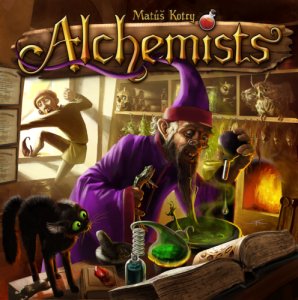 Alchemists is a logic puzzle wrapped in a worker placement game, with a fair amount of bluffing for good measure. It’s also got a delightful and light-hearted theme that reminds me of the Unseen University in Discworld. But don’t let the silly theme fool you — this game will put some serious stress on your noggin.
Alchemists is a logic puzzle wrapped in a worker placement game, with a fair amount of bluffing for good measure. It’s also got a delightful and light-hearted theme that reminds me of the Unseen University in Discworld. But don’t let the silly theme fool you — this game will put some serious stress on your noggin.
Here’s how the game works: there are eight different magical ingredients used in potions. There are eight different alchemical makeups, each of which corresponds to one (and only one) ingredient. Your job, dear wizard, is to figure out which ingredient matches to which alchemical. The game (via a smartphone app or a GM board) shuffles up these matches before each game, so it’s different with each playthrough.
That’s the logic puzzle. But to figure it out, you’re going to need to gather ingredients, make potions, and test them on someone. You can use students, adventurers, or risk debilitating effects by testing on yourself. This is where worker placement comes in — as a busy academic, you only have so much time to devote to gathering, testing, and publishing.
Oh, yeah, publishing. Most of your victory points will come from when you publish a new theory on an ingredient, or co-author a theory published by a rival… or when you debunk a rival’s theory. This is where bluffing and guesswork come in. You will not have enough actions to completely solve the puzzle, so you’re going to have to make educated guesses and base some of your solutions on opponents’ theories.
This latter reality is what really drives the excitement of Alchemists. At some point, a theory will likely be debunked, and that’s when your mind goes into overdrive. Players who were basing solutions off the debunked theory are furiously scribbling on their charts, wondering how screwed their theories are. By this point, you’re running out of opportunities to test, so you start zipping theories and hope that you didn’t mark something wrong.
Then the game ends, and the truth is revealed. There are groans as players see where they went wrong, whose guesswork went unchallenged, and who should’ve had more faith in their theories. The first time I played with a full group of four, my brain was running a million miles a second after I realized I had made one small error which had snowballed, throwing wrenches downstream and made the final victory point-counting a tense affair.
Now Get to Work!
It’s a simple mechanic — put down worker, pick up worker, get stuff. But in the hands of skilled board game designers, worker placement makes for some damn fun play.

